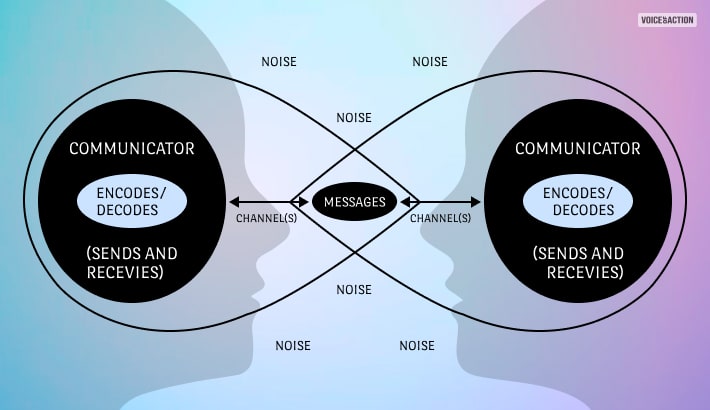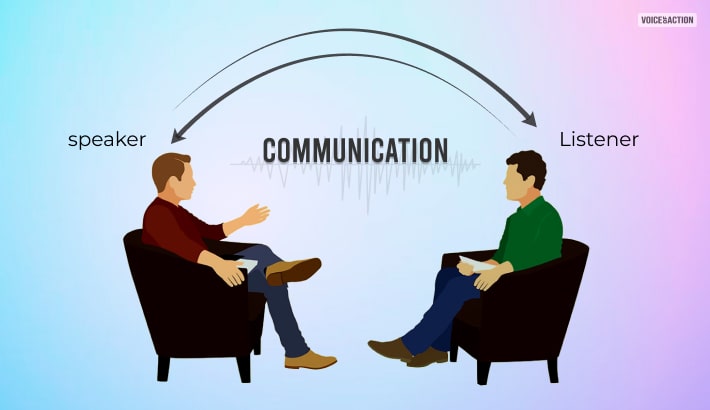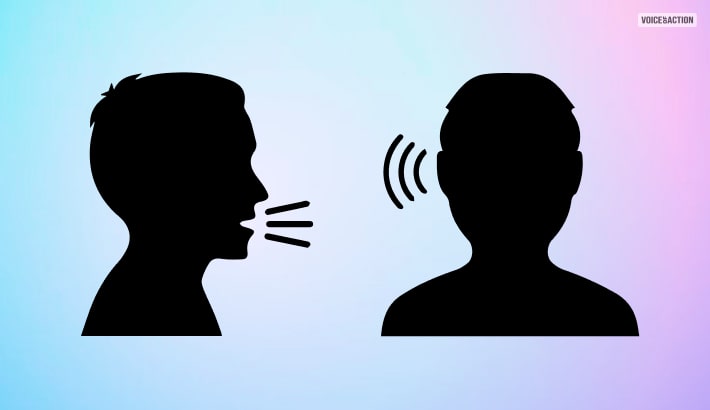Want to END Arguments Through Communication? Try the Transactional Model Of Communication For Your NEXT MEETING!!!

While there are many models of communication, the transactional model is the simplest and the most useful.
It is not a fact unknown that humans are social animals. They need to communicate in order to survive. This is a scientifically proven fact, and it has been going on since the beginning of time. So if there is something that we need in order to survive in society, it is communication.
If you want to know more about the transactional model of communication, then you have reached the right place. Keep on reading this article till the end to learn more…
What Is The Transactional Model Of Communication?

Do you know about both-way conversations? The listener and speaker take part in it equally. Place yourself as the speaker. If I don’t like your logic, I’ll object and state my point.
There’s another dimension to it. Imagine a company with two-way communication. Here, the higher management will listen to feedback and opinions from the workers, too. And then make significant decisions.
This interactive model of communication is the best in any circumstance. There is a listener and a speaker.
However, the problem arises with the transactional model of communication. There are multiple listeners against the only speaker. So, the speaker will take feedback in turns from each listener. In addition, a listener can also argue with the speaker at any point. This is the ideal setting for two-way communication.
Factors: What Makes It The Transactional Model Of Interaction?
There are various characteristics of this interactive model of communication that makes it one of the best when it comes to communicating. For example, in this model of communication, the communicators send and receive messages simultaneously.
Here are some of the factors of the transactional model of communication:
1. Social
When it comes to the social factors or the social context, it refers to the rules or the norms that are followed in society. This means that the way you communicate with others will have to abide by the accepted rules of society.
Even minute changes in the social sphere will affect the topic of conversation. When communicating, you need to be patient while demonstrating empathy. At the same time, you need to ensure that you are making eye contact with the person you are communicating with.
2. Cultural
In communication, the cultural context is crucial. The differences in culture create multiple cultural connotations. Meanwhile, these may lead to rebuttals and disagreements as well.
When communicating, the communicators should not assume that they are aware of each other’s cultural backgrounds. You need to keep in mind that while some cultures are dominant, others lie on the marginalized spectrum.
3. Relational
Last but not least is the relational context of communication. This involves everything that the communicators share. Includes the history of their relationship.
It is one of the most common factors that affect the transactional model of communication. This is because people with shared histories will be able to freely communicate with one another compared to those who come from different backgrounds.
Note: The term Context in this case is the factors that influence the communication between the two communicators. These can be either physical or/and psychological factors that have the ability to enhance the conversation.
Importance: Why Do You Need A Transactional Model Of Communication?

Transactional communication is the best form of communication. It leaves space for the exchange of POVs in real-time. Hence, both parties are equally communicating and interacting.
This model of communication is a continuous process. But the speaker should narrate in parts. Therefore, the listener can process the data quickly. At the same time, raise queries about the content or post arguments if needed.
The transnational model of communication has multiple contexts. Therefore, fresh ideas keep flowing from both ends.
But people ask why it is more effective than the other models. Now, this question links to the theme of our website.
At VoiceOfAction, we believe that small changes can result in significant positive outcomes. When you choose this transaction model, you resonate with the same value.
This model is straightforward. However, it leaves much space for arguments and counterarguments during communication. Hence, there is a coherent agreement and consensus during communication.
It also gives a lot of importance to communicators’ different ethnicities, traditions, and cultures.
Frequently Asked Questions (FAQs):-
As you have almost reached the end of this article, I hope most of your doubts have been cleared. Nevertheless, here are some of the questions that users frequently ask. Try reading through them for more clarity.
Ans: Some of the characteristic features of the transactional model of communication are:
⦿ There are two or more people involved in the process.
⦿ Communication is dependent on both parties.
⦿ The events of the communication have a specific tense that it follows.
Ans: Another common type of communication model is the linear model of communication. It is the model of communication where there is only one speaker and one listener. Communication happens one way: the sender sends the message, and the listener receives the message.
Ans: There are several models of communication that exist at present. Some of them are:
⦿ Linear
⦿ Constructionist
⦿ Convergence
⦿ Berlo
⦿ Schramm
Unleash Your Communicating Skills!!
The transactional communication model is the type of communication where two individuals converse. It is a transaction of communication in which both parties take part.
In other words, two-way communication is an effective tool. It ensures a meaningful outcome from the communication. But, the communication model is relatively simple.
You can use it in the society. Or in your office. If you find good results, let me know in the comments.
Many readers had a query regarding the topic. They wanted to know about the transactional model of communication in detail. I hope this blog meets all open ends.
If you have any other queries, feel free to comment on them in the box below.
Read Also:


























